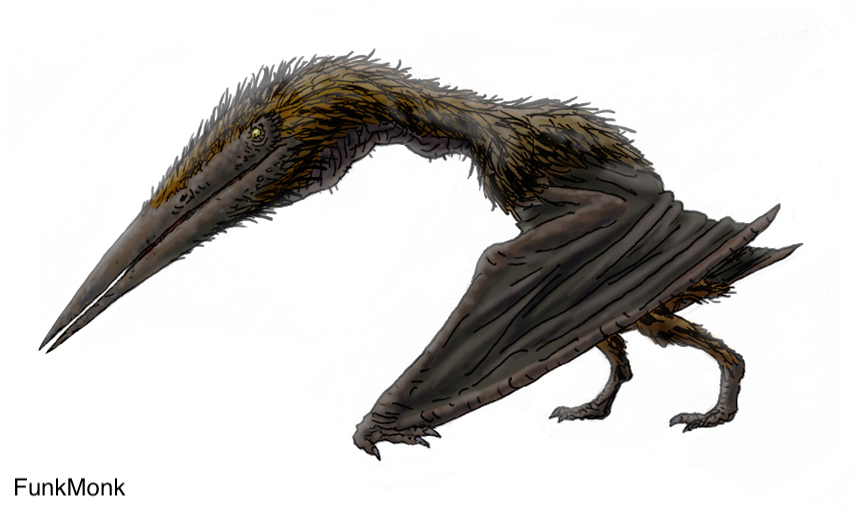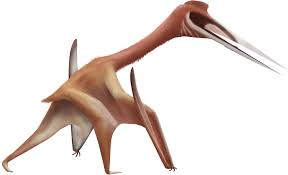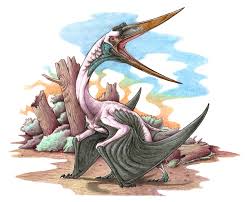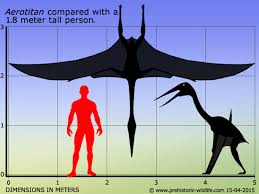Welcome to Aerotitan

Name Definition
Air titan
Name Given By
Fernando Emilio Novas, Martin Kundrat, Federico Agnolína, Martín Ezcurra, Per Erik Ahlberg, Marcelo Isasi, Alberto Arriagada & Pablo Chafrat in 2012
Location
Allen Formation in the Neuquén Basin of Patagonia, Argentina
Classification
Pterosauria, Pterodactyloidea, Azhdarchoidea, Azhdarchidae
Size
wingspan estimated to be about 5 meters though this is uncertain since not enough remains have been discovered
Temporal Range
Maastrichtian stage of the late Cretaceous, around 70 million years ago
Ecological niche
large aerial carnivore/piscivore
Species/Sub Species
A. sudamericanus
Diet
similar to other azhdarchids, Aerotitan is thought to have either scavenged from carcasses or actively catch smaller animals like fish and dinosaurs
Introduction
Aerotitan is a genus of azhdarchid pterosaurs that lived in Argentina during the late Cretaceous epoch. Though scarcely known from fossil remains, Aerotitan is thought to have been the first azhdarchid pterosaur known from South America, though there are not enough remains to confirm this fact. These fossils consist of a partial rostrum (a beaklike protrusion in fish and other animals that serve as a stiff and rigid jaw), and, similar to many other pterosaurs, the snout is rather elongated and toothless. The pterosaur family Azhdarchidae are famous for their proportionately long necks and tall statures, and are some of the largest flying animals in the animal kingdom. Some genera examples that come from this family are Quetzalcoatlus, Hatzegopteryx, and Arambourgiania. Of course, Azhdacho, the pterosaur that this family is named after, is also an azhdarchid. These long necks of the azhdarchids are supported by elongated cervical (neck) vertebrae. It is uncertain how and what these azhdarchids fed on. Most studies show that azhdarchids like Aerotitan would have been most well suited to feeding on the ground since the long and slender neck would have provided less support for water resistance if it were to fly and catch fish at the same time like other pterosaurs. Expanding on this theory, most people envision azhdarchids like taller storks where they would either catch fish from the shallow waters or pluck smaller animals from the ground like smaller dinosaurs. While most people view Aerotitan as an azhdarchid, a study in 2018 Nicholas Longrich and colleagues have classified Aerotitan as a thalassodromid, a separate family from the azhdarchids that is still in the clade Azhdarchoidea. Only Tupuxuara and Thalassodromeus are viewed as valid genera in the Thalassodromidae, though there have been some other pterosaurs whose classification has been subject to controversy and might be placed in this family. Other than Aerotitan, there is also the azhdarchid Alanqa who has been considered a thalassodromid. Others include Lacusovagus and Banguela. Aerotitan is recognized from the Allen Formation and is known to have lived with other typical Cretaceous South American fauna like titanosaurs, abelisaurs, nodosaurids, South American hadrosaurids, the bird species Limenavis patagonica, the sphenodontian species Lamarquesaurus cabazai, the elasmosaurid species Kawanectes lafquenianum, and some primitive mammals.


